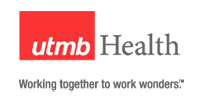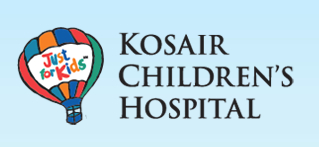Study Evaluating the Safety and Efficacy of Two Doses of Stannsoporfin in Combination With Phototherapy in Neonates With Hyperbilirubinemia
| Status: | Completed |
|---|---|
| Conditions: | Gastrointestinal |
| Therapuetic Areas: | Gastroenterology |
| Healthy: | No |
| Age Range: | Any |
| Updated: | 4/21/2016 |
| Start Date: | September 2013 |
| End Date: | March 2016 |
A Phase 2 Multicenter, Single Dose, Randomized, Double Blind, Placebo Controlled, Parallel Group Study Evaluating the Safety and Efficacy of Two Doses of Stannsoporfin in Combination With Phototherapy in Neonates
Neonatal jaundice is the most common cause of hospital readmission for term- and near term
infants and its management poses a significant burden on the healthcare system.
Infants with isoimmune hemolytic disease, such as ABO or Rhesus (Rh) incompatibility, or
glucose-6-phosphate dehydrogenase (G6PD deficiency), have an increased rate of red cell
destruction and, thus, an increase in bilirubin production. Newborn infants have immature
liver function and do not conjugate bilirubin well, which results in accumulation of
unconjugated bilirubin. Thus, bilirubin levels may rise rapidly and intervention may be
required. At present, phototherapy (PT) is the most frequently used treatment for
hyperbilirubinemia; it converts unconjugated bilirubin to less toxic water soluble
photoisomers that are then excreted in the urine without need for conjugation. Infants who
do not respond to PT are treated by exchange transfusion (ET), considered a therapy of last
resort because of associated morbidity and mortality. Both PT and ET enhance the elimination
of, but have no impact on the production of bilirubin.
Stannsoporfin is a heme oxygenase inhibitor that acts to reduce bilirubin production. It is
being developed for the management of neonatal jaundice.
infants and its management poses a significant burden on the healthcare system.
Infants with isoimmune hemolytic disease, such as ABO or Rhesus (Rh) incompatibility, or
glucose-6-phosphate dehydrogenase (G6PD deficiency), have an increased rate of red cell
destruction and, thus, an increase in bilirubin production. Newborn infants have immature
liver function and do not conjugate bilirubin well, which results in accumulation of
unconjugated bilirubin. Thus, bilirubin levels may rise rapidly and intervention may be
required. At present, phototherapy (PT) is the most frequently used treatment for
hyperbilirubinemia; it converts unconjugated bilirubin to less toxic water soluble
photoisomers that are then excreted in the urine without need for conjugation. Infants who
do not respond to PT are treated by exchange transfusion (ET), considered a therapy of last
resort because of associated morbidity and mortality. Both PT and ET enhance the elimination
of, but have no impact on the production of bilirubin.
Stannsoporfin is a heme oxygenase inhibitor that acts to reduce bilirubin production. It is
being developed for the management of neonatal jaundice.
Inclusion Criteria:
1. Term and near term infants ≥35 and ≤ 43 weeks GA, age 0-48 hours with ABO or Rh
incompatibility (anti C, c, D, E or e) who are Coombs positive, or age 0-72 hours
with G6PD deficiency
2. Parental or guardian consent
3. Birth weight ≥ 2500 grams
4. At or above the age-specific threshold for initiating PT per the AAP guidelines based
on measurement of TSB
5. Parents agree to observe light precautions for 10 days post treatment
Exclusion Criteria:
1. Elevated direct bilirubin ≥2 mg/dL, OR > 20% of the total serum bilirubin 2. Alanine
aminotransferase (ALT) > 2 times the upper limit of normal (ULN) and/or aspartate
aminotransferase (AST) > 3 times ULN 3. Abnormal renal function defined as creatinine
and/or blood urea nitrogen >2 times the ULN 4. Any other clinically significant
abnormalities on screening laboratory evaluation (including ECG) that in the opinion of
the investigator makes the patient unsuitable for the clinical trial 5. Apgar score ≤6 at
age 5 minutes 6. An unexplained existing rash or skin erythema 7. Prior exposure to PT 8.
Clinical suggestion of neonatal thyroid disease or current uncontrolled thyroid disease in
the mother (maternal Hashimoto's disease is not exclusionary) 9. Cardio-respiratory
distress, defined as a respiratory rate >60 breaths per minute at time of enrollment 10.
Any abnormal auditory or ophthalmologic findings on screening physical exam 11. Treatment
or need for treatment in the neonate with medications that are photoreactive or may
prolong the QT interval (erythromycin ointment for eye prophylaxis is permitted), or
family history of Long QT syndrome QT syndrome (appendix C) 12. Known porphyrias or risk
factors for porphyrias, including family history 13. A maternal history of systemic lupus
erythematosus 14. Maternal use of phenobarbital 30 days before, or after delivery, if
breast-feeding 15. Maternal current drug or alcohol abuse, or maternal history of drug or
alcohol abuse that, in the opinion of the Investigator, would not make the patient a
suitable candidate for participation in the clinical trial 16. Significant congenital
anomalies or infections 17. Risk of requiring surgery or exposure to operating room (OR)
lights in the first 2 weeks of life 18. Persistent hypoglycemia (blood glucose <40 mg/dL)
19. Temperature instability defined as temperature consistently (3 consecutive times)
<36ºC and/or >37.5ºC axillary 20. Use of IVIG or albumin prior to study drug
administration 21. Post-delivery treatment with medications that are known or suspected to
displace bilirubin from albumin (e.g., ceftriaxone or sulfa-based antibiotics) 22. Use of
photosensitizing drugs or agents (appendix D) 23. Unwillingness for parents/guardians to
adhere to recommendations regarding light precautions 24. Exposure to any investigational
medications or devices after delivery, or participation in another clinical trial while
participating in this trial 25. Any other concurrent medical condition, which in the
opinion of the Investigator, makes the patient unsuitable for the clinical trial
We found this trial at
20
sites
1800 West Charleston Boulevard
Las Vegas, Nevada 89102
Las Vegas, Nevada 89102
(702) 383-2000

University Medical Center of Southern Nevada University Medical Center is dedicated to providing the highest...
Click here to add this to my saved trials
University of Texas Medical Branch Established in 1891 as the University of Texas Medical Department,...
Click here to add this to my saved trials
Kosair Children's Hospital For more than a century, Kosair Children's Hospital and its predecessor hospitals...
Click here to add this to my saved trials
171 Ashley Avenue
Charleston, South Carolina 29425
Charleston, South Carolina 29425
843-792-1414

Medical University of South Carolina The Medical University of South Carolina (MUSC) has grown from...
Click here to add this to my saved trials
Click here to add this to my saved trials
Click here to add this to my saved trials
Click here to add this to my saved trials
Click here to add this to my saved trials
University of Louisville Hospital As the academic hospital at the heart of the Louisville Metro...
Click here to add this to my saved trials
Click here to add this to my saved trials
Winthrop University Hospital Founded in 1896 by a group of local physicians and concerned citizens,...
Click here to add this to my saved trials
Click here to add this to my saved trials
Philadelphia, Pennsylvania 19102
Click here to add this to my saved trials
Click here to add this to my saved trials
Click here to add this to my saved trials
Click here to add this to my saved trials
Click here to add this to my saved trials
Click here to add this to my saved trials
Click here to add this to my saved trials
Click here to add this to my saved trials



